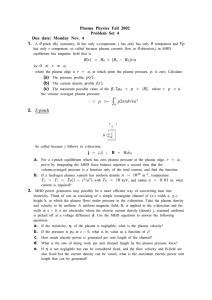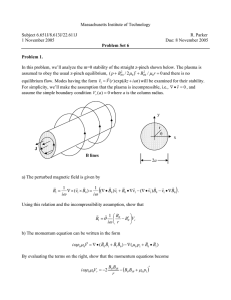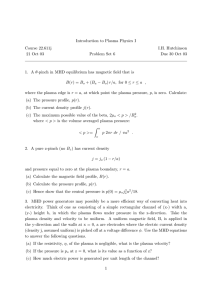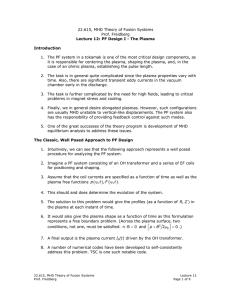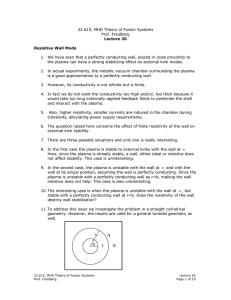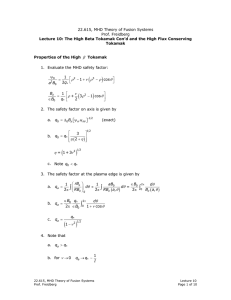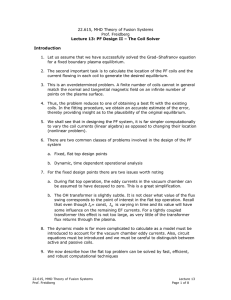22.611J, 6.651J, 8.613J Introduction to... Problem Set #4
advertisement
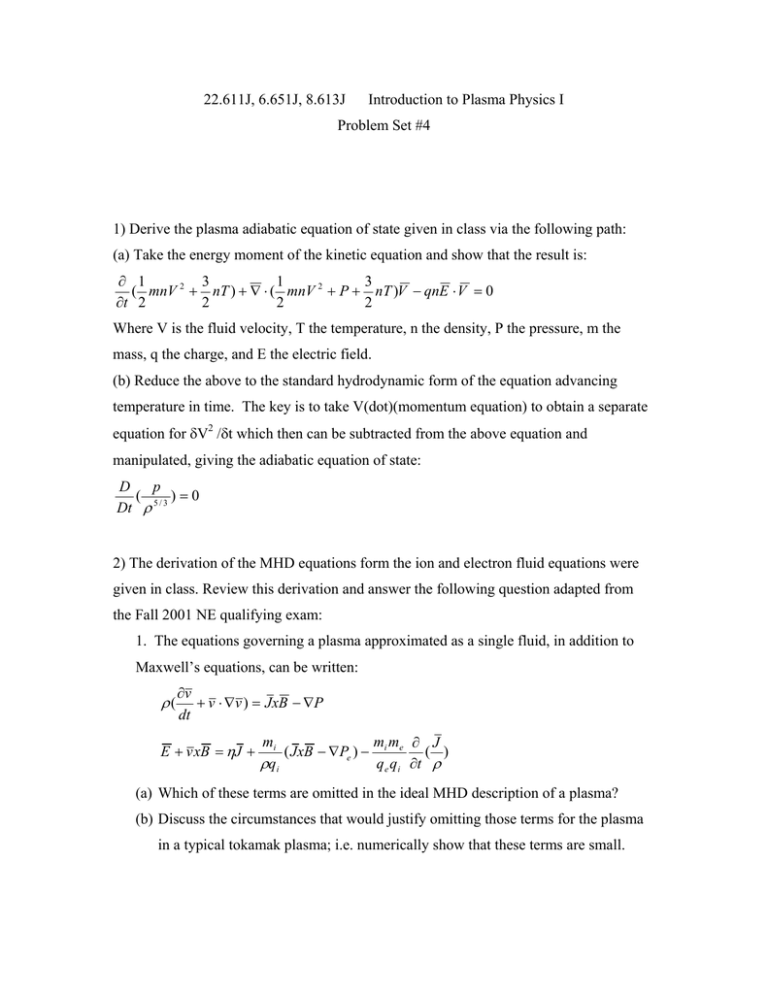
22.611J, 6.651J, 8.613J Introduction to Plasma Physics I Problem Set #4 1) Derive the plasma adiabatic equation of state given in class via the following path: (a) Take the energy moment of the kinetic equation and show that the result is: 3 ∂ 1 1 3 ( mnV 2 + nT ) + ∇ ⋅ ( mnV 2 + P + nT )V − qnE ⋅ V = 0 2 ∂t 2 2 2 Where V is the fluid velocity, T the temperature, n the density, P the pressure, m the mass, q the charge, and E the electric field. (b) Reduce the above to the standard hydrodynamic form of the equation advancing temperature in time. The key is to take V(dot)(momentum equation) to obtain a separate equation for δV2 /δt which then can be subtracted from the above equation and manipulated, giving the adiabatic equation of state: D p ( 5/3 ) = 0 Dt ρ 2) The derivation of the MHD equations form the ion and electron fluid equations were given in class. Review this derivation and answer the following question adapted from the Fall 2001 NE qualifying exam: 1. The equations governing a plasma approximated as a single fluid, in addition to Maxwell’s equations, can be written: ρ( ∂v + v ⋅ ∇v ) = JxB − ∇P dt E + v xB = ηJ + mm ∂ J mi ( JxB − ∇Pe ) − i e ( ) q e qi ∂t ρ ρq i (a) Which of these terms are omitted in the ideal MHD description of a plasma? (b) Discuss the circumstances that would justify omitting those terms for the plasma in a typical tokamak plasma; i.e. numerically show that these terms are small. 3) A Z-pinch is a cylindrically symmetric plasma column with current in the z direction only. Consider a static ideal MHD Z-pinch equilibrium with J = c1 r 2 / a2 (1 + r 2 / a 2 ) 3 where c1 is a constant. (a)Calculate Bθ(r) and p(r). Express your answers in terms of I, the total current. Sketch the fields and the currents. (b) (Extra credit) Since J(r) vanishes for large r the Z pinch is apparently confined by its own current. Doesn’t this violate the virial theorem(a plasma can not be confined by its own currents)? Explain. (From Problem 5.2, Ideal Magnetohydrodynamics, J.P. Freidberg)


